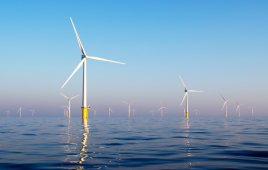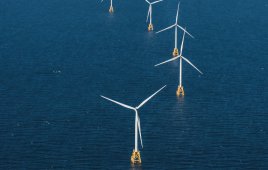Renewable energy is one of the four main building blocks outlined in the EPA’s Clean Power Plan, and states are likely to rely upon the production of renewable energy as a part of their efforts to control carbon in the electric sector. Air and energy regulators should understand that the existing tools used in the renewable energy markets ensure that renewable energy is metered, tracked, and accounted for in robust tracking systems across North America, and that with the help of these systems, renewable energy can increase the ability of states to cost-effectively meet their carbon goals.
Key observations include:
- State production of renewable energy promises to be a significant compliance option for power sector carbon standards.
- The production of renewable energy in the U.S. is tracked by the megawatt-hour (MWh) through existing tracking systems that have been developed to be transparent and ensure a robust method for establishing legal REC ownership and supporting regulatory compliance.
- Existing tracking systems were developed out of stakeholder processes with the help of air and energy regulators, regional transmission operators, generation owners, and utilities. States can rely on these systems to support the use of renewable energy for power sector carbon policy compliance.
- Using existing REC tracking systems and tracking protocols can ensure the proper accounting for renewable energy generation, and increase the likelihood of cost-effectively achieving emission reduction goals under 111(d) Plans.
Introduction
With the issuance of the EPA’s June 2, 2014 Clean Power Plan, a carbon policy for existing fossil-fired electric generation, many states are exploring the development of compliance plans to enable them to meet EPA requirements in the most flexible manner and at the lowest cost.
Program flexibility should allow states and municipalities to look beyond traditional smokestack-by-smokestack compliance solutions and use a variety of measures—including greater deployment of renewable energy—to meet carbon-reduction targets. In 2009, the National Association of Regulatory Utility Commissioners (NARUC) Task Force on Climate Policy recognized the benefits of addressing power sector carbon emissions by relying on clean energy policies, including renewable energy investment: “For decades, the goals of State clean energy investment have been consistent with initiatives that only now are being explicitly described as ‘carbon policies’.”
In this paper we explore one aspect of this approach—specifically, how renewable energy is currently accounted for and tracked by states that might want to make their renewable energy investments part of their federal carbon compliance strategies. Before exploring that topic, we briefly introduce the federal program and the potential role for renewable energy. How Section 111(d) Works Section 111 of the Clean Air Act (Act) establishes mechanisms for controlling emissions of air pollutants from stationary sources. Section 111(b) provides authority for EPA to promote New Source Performance Standards (NSPS), which apply only to new and modified sources. Once these standards for new sources are finalized, Section 111(d) calls for regulation of existing sources.
Section 111(d), the statute under which EPA is proceeding in setting its guidelines, provides for a two-step federal/state process the U.S. Supreme Court summarizes as: “EPA issues emissions guidelines; in compliance with those guidelines and subject to federal oversight, the States then issue performance standards for stationary sources within their jurisdiction.”
Center for Resource Solutions
www.resource-solutions.org/publications.php
Filed Under: News, Policy





